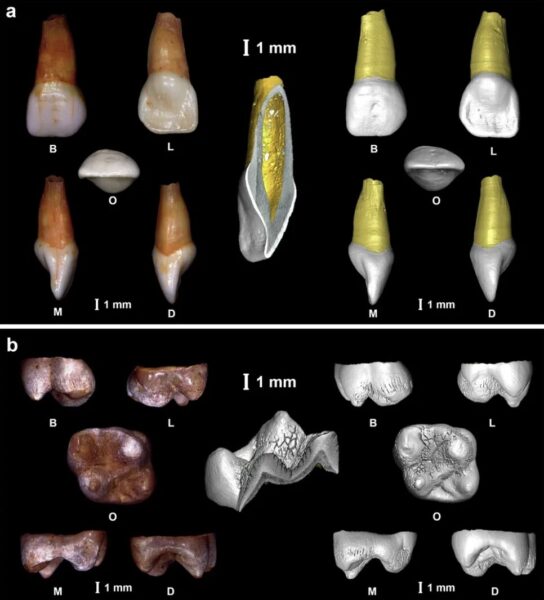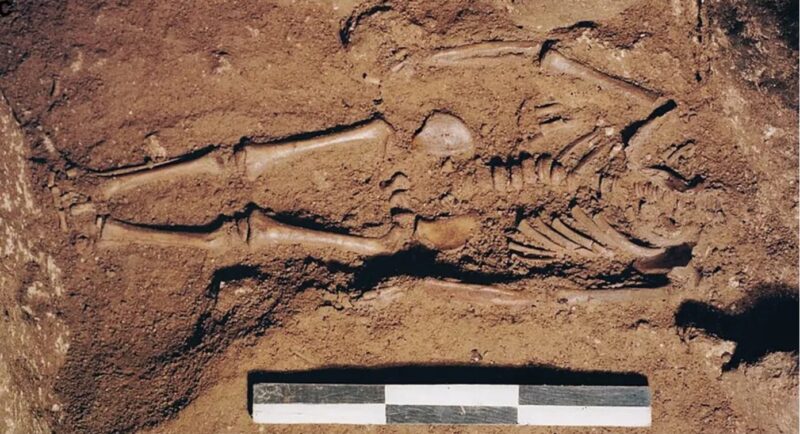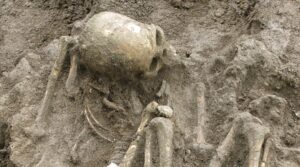Researchers have sequenced the oldest known genome in Italy. It belongs to a blue-eyed, dark-skinned, curly-haired little boy who lived during the last Ice Age.
Archaeologists discovered his skeleton in 1998 in the Grotta delle Mura cave in Puglia, the region at the heel of Italy’s “boot.” Carefully placed between slabs of rock, it was the only burial in the cave. The well-preserved remains of the little boy offered researchers a rare glimpse into infancy during the Upper Palaeolithic era.
The infant was 76cm (two-and-a-half feet) tall when he died. Dental analysis suggested he was around 16 months old. His remains indicate he was poorly developed, and his teeth show nine lines that are markers of stress. Clearly, the boy’s short life was a difficult one.
Isotopes within the tooth enamel gave most of the information. The strontium suggested that the mother was malnourished and stayed in one place during pregnancy. A fracture in the child’s collarbone indicates his birth was very difficult.

Photographic records and virtual reconstructions of the boy’s teeth. Image: Higgins et al., 2024
Born with ill health
DNA analysis proves that the child had ill health throughout its short life. Mutations were present in two genes, TNNT2 and MYBP3, signaling that he suffered from the genetic condition of hypertrophic cardiomyopathy which eventually leads to congestive heart failure — his likely cause of death.
Radiocarbon dating shows the child lived between 16,910 and 17,320 years ago, not long after the Last Glacial Maximum. At this time, ice covered a quarter of the land on Earth.
The boy existed in a time of significant change, and this find offers information on ancient human migration into southern Italy. The region’s climate was slightly warmer than other parts of Europe, which made it a slight refuge from the harsh conditions in other parts of continental Europe.
Genetic analysis shows the boy was an ancestor of the Villabruna cluster, a group of post Ice-Age people that lived until about 14,000 years ago. His connection to them proves that their lineage began in southern Italy before the end of the Ice Age. It is the first time that researchers have been able to say without question that the group was in the region before the Ice Age ended.






